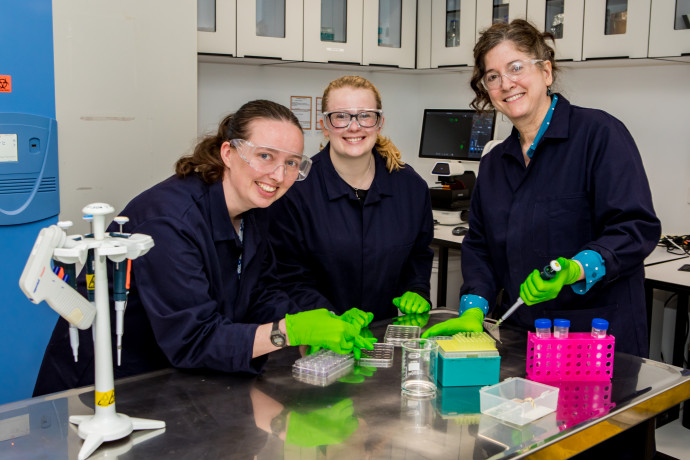Understanding the invasive mechanics of endometriosis

By investigating the invasive properties of endometriotic cells, Dr Rachael Wood from Te Whare Wānanga o Waitaha the University of Canterbury hopes to identify new avenues for managing endometriosis
Published on 2 Whiringa-ā-rangi November 2023
Endometriosis is an incurable disease that arises when tissue like the uterine endometrium (the lining of the uterus) develops outside of the uterus, for example in the ovaries or fallopian tubes. This can lead to debilitating pain, fatigue and nausea, as well as reduced fertility. Although it affects 10% of wāhine (and those assigned as female at birth) in Aotearoa New Zealand, this disease remains poorly understood and difficult to diagnose and treat.
In a groundbreaking preliminary study, Dr Wood has revealed that endometriotic tissue has similar invasive properties to cancer. Now, with her Marsden Fund Fast-Start grant, she hopes to determine how endometriotic tissue modifies its environment to aid invasion. Dr Wood and her team will measure the mechanical properties of healthy endometrial and diseased endometriotic tissues, and use these measurements to build 3D, gel-based tissue models that can be used for experimental work. By observing how healthy and diseased cells interact with different tissue models, they hope to better understand the onset and progression of endometriosis, and how this compares to cancer.

Immunofluorescent images of non-invasive cells (mouse myoblast cell line C2C12), human endometrial cancer cells (EM-E6/E7/TERT), and human ovarian endometriosis cells (iEc-ESCs) showing how endometriosis cells invade further and faster than cancer cells (scale bar = 1 mm; photo: supplied).
This project will help to uncover how the mechanical properties of tissue, such as stiffness, are impacted by the invasion of endometriotic cells. Ultimately, this knowledge may help to identify new diagnostic and treatment strategies for endometriosis, bringing relief to millions.
